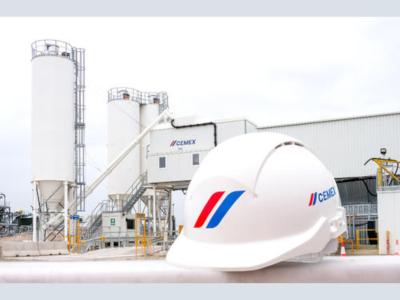Over a year ago, it was reported that First Graphene was working with a subsidiary of Mexican multi-national building materials company CEMEX, to trial graphene in railway sleepers cast using recycled aggregates. Now, it was announced that Cemex was granted funding from Innovate UK’s decarbonizing concrete fund for a research project into the use of graphene in concrete. The use of graphene within a concrete mix has the potential to significantly reduce CO2 emissions by using less material whilst still achieving the same structural performance.
The grant was awarded as part of a consortium which Cemex will lead, working in partnership with Galliford Try, Sika, Northumbria Water and the Graphene Engineering Innovation Centre (GEIC) at the University of Manchester, and totals around £400k.
Mike Higgins, National Technical Manager for Cemex UK, commented that “The funding further demonstrates our continued commitment to developing more sustainable construction materials and bringing them to market. It is a great example of how partnership working across the construction sector and alongside academic institutions and can drive innovative new approaches that aim to bring about additional benefits for the built environment, as it continues its journey towards a more sustainable future.”
The project proposes an innovative approach to decarbonizing concrete by integrating micronized limestone and graphene-based admixtures into the concrete mix, targeting the reduction of embodied carbon emissions associated with concrete production.
This innovation addresses the challenge by reducing the reliance on Ordinary Portland Cement, which is responsible for a significant portion of concrete's carbon emissions. The use of micronized limestone as a supplementary cementitious material reduces the need for Ordinary Portland Cement, thereby decreasing CO2 emissions.
Additionally, incorporating graphene enhances the mechanical properties of the concrete, allowing for the use of higher supplementary cementitious material content without compromising early age strength development.
The core innovation lies in the synergy between micronized limestone and graphene. Micronized limestone, with its fine particle size and high surface area, contributes to improved particle packing and hydration reactions in the concrete mix, enhancing strength and durability.
The addition of graphene helps to ensure that when used in conjunction with a high supplementary cementitious material content, including micronized limestone, the mix yields lower carbon concrete with traditional or reduced curing time. This extends the use of low carbon supplementary cementitious materials to applications where traditional strength development is needed to meet program requirements.
Graphene-enhanced concrete can also be used like standard concrete, which means that no new equipment or training is required in the batching or laying process. As well as benefitting from a reduction in CO2 emissions, this also has the potential to be commercially viable for the customer without additional costs, often associated with new ways of working, being incurred.
James Baker, CEO at Graphene@Manchester, said: "The bid further strengthens GEIC’s reputation to work with industry and its supply chain for the scale-up and commercialisation of graphene. The potential for graphene-enhanced concrete to significantly reduce CO2 emissions during manufacturing is a major step forward in sustainable construction".
Higgins added: “The commercial potential of this innovation is substantial, given the urgent need for more sustainable building materials in the face of global climate challenges. Our proposal encompasses a comprehensive plan from laboratory development to real-world application, ensuring the solution is not only technically viable but also commercially viable.”
To learn more about the exciting possibilities and status of graphene-enhanced construction materials, read our Graphene-enhanced Construction Materials report.


